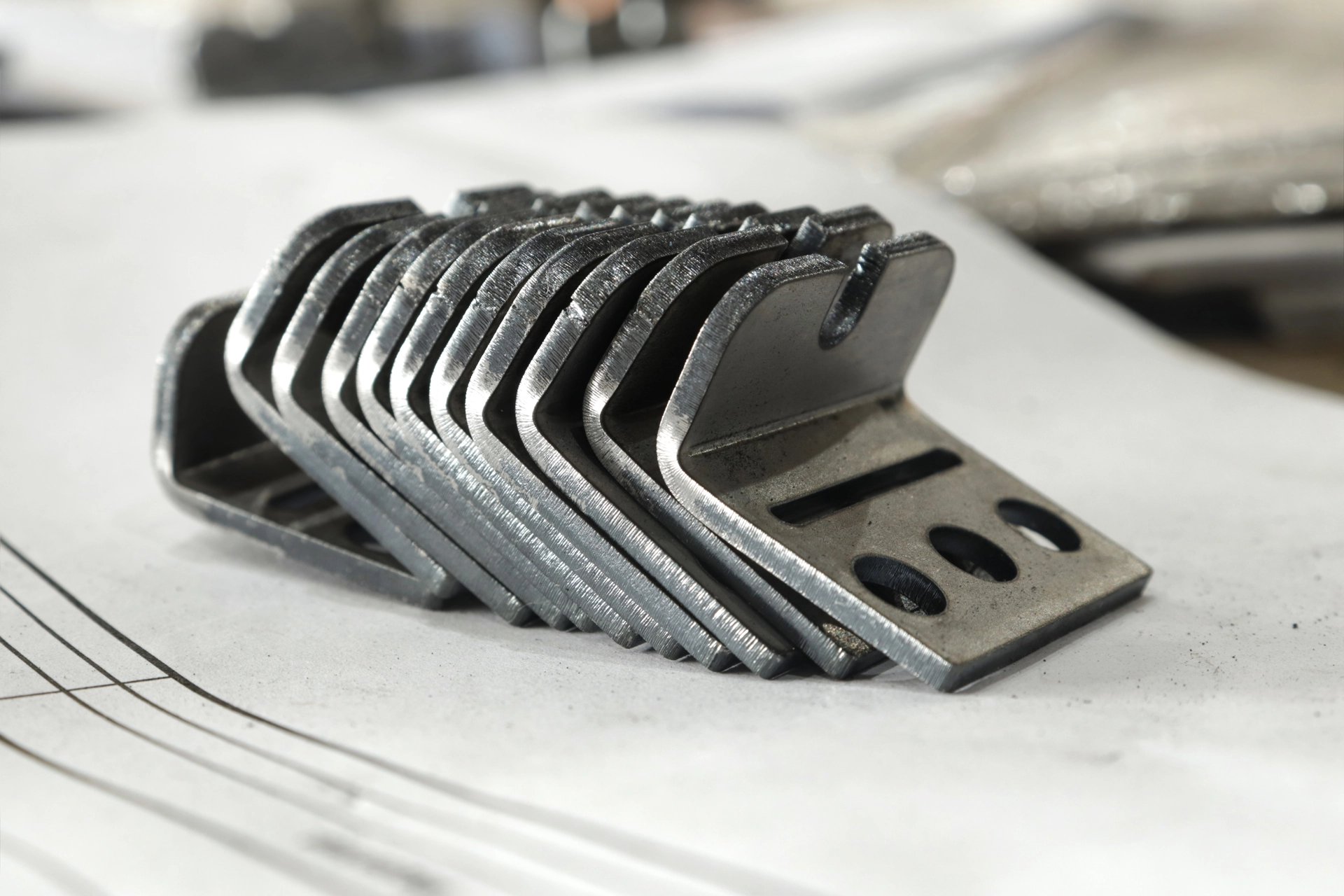Mild Steel vs Stainless Steel

When it comes to selecting the ideal metal for your project, two popular options often come to mind: mild steel and stainless steel. Both materials have their unique properties and advantages, making them suitable for different applications. In this post, we'll explore the key differences between mild steel and stainless steel to help you make an informed decision for your next project.
Composition and Properties
Mild steel, also known as low-carbon steel, is primarily composed of iron and a small percentage of carbon (typically less than 0.3%). This composition gives mild steel its characteristic strength and formability. At Fabworks, we offer two types of mild steel:
- 1008 Cold-Rolled Steel: Known for its smooth surface finish and tight tolerances.
- A36 Hot-Rolled Pickled and Oiled (HRPO) Steel: Offers a balance of strength and workability.
Stainless steel, on the other hand, contains a minimum of 10.5% chromium, which forms a protective layer of chromium oxide on the surface. This layer gives stainless steel its renowned corrosion resistance. At Fabworks, we provide 304-2B stainless steel, a versatile and widely used grade.

Corrosion Resistance
One of the most significant differences between mild steel and stainless steel is their corrosion resistance. Mild steel is prone to rusting when exposed to moisture and air, requiring additional protective coatings or regular maintenance to prevent corrosion.
Stainless steel, thanks to its chromium content, forms a self-healing protective layer that makes it highly resistant to corrosion and rust. This property makes stainless steel an excellent choice for applications in harsh environments or where hygiene is crucial, such as food processing equipment or outdoor installations.
Strength and Durability
Both mild steel and stainless steel offer good strength and durability, but they excel in different areas. Mild steel typically has a higher tensile strength and is more easily machined, making it suitable for structural applications and general fabrication work.
Stainless steel, while generally not as strong as mild steel, offers better durability in corrosive environments. It also maintains its strength at high temperatures, making it ideal for applications involving heat exposure.
Cost Considerations
When it comes to cost, mild steel is generally less expensive than stainless steel. This makes mild steel an attractive option for large-scale projects or applications where corrosion resistance isn't a primary concern. However, it's important to consider long-term costs, including maintenance and potential replacement, when making your decision.
Stainless steel, while initially more expensive, often proves cost-effective in the long run due to its longevity and low maintenance requirements, especially in challenging environments.

Fabrication and Welding
Both mild steel and stainless steel can be easily fabricated and welded, but there are some differences to consider. Mild steel is generally easier to weld and work with, making it a popular choice for structural applications and general fabrication.
Stainless steel requires more skill to weld properly, as it's more susceptible to warping and distortion due to heat. However, with proper techniques, stainless steel can be welded to create strong, corrosion-resistant joints.
At Fabworks, our laser cutting service can precisely cut both mild steel and stainless steel to your specifications. Our state-of-the-art equipment ensures high-quality cuts with tight tolerances, regardless of the material you choose.
Applications
Mild steel is used for:
- Construction and structural components
- Automotive parts
- General machinery and equipment
- Furniture and fixtures
Stainless steel is used for:
- Food processing equipment
- Medical devices
- Marine applications
- Architectural features
- Chemical processing equipment
How to choose the right material for your project
Choosing between mild steel and stainless steel depends on various factors, including your project's specific requirements, budget, and intended environment. Consider the following questions:
- Will the component be exposed to moisture or corrosive elements?
- Is strength or weight a primary concern?
- What is your budget for both initial costs and long-term maintenance?
- Are there any specific industry regulations or standards to meet?
At Fabworks, we understand that material selection is crucial to the success of your project. Our team of experts is always ready to help you choose the right material and provide high-quality laser cutting, bending, and finishing services to bring your designs to life. Whether you opt for the cost-effectiveness of mild steel or the corrosion resistance of stainless steel, we have the capabilities to meet your needs.
Remember, the best material choice is one that balances performance, cost, and longevity for your specific application. By carefully considering the properties of mild steel and stainless steel, you can ensure that your project starts with the right foundation.
What is K-Factor?
Demystify K-factor in sheet metal bending. Learn its importance and how Fabworks ensures precise bends without complex calculations.
Joining Techniques for Laser Cut Parts
Explore essential sheet metal joining techniques, from welding to adhesive bonding, to create durable and efficient parts for any project.
Order Sheet Metal Parts .
Upload your STEP file for an instant laser cutting quote. Quote in seconds, order in minutes, receive parts in days.
or drag and drop
.STEP / .STP up to 25MB
Your file are safe, secure and retain all intellectual rights.